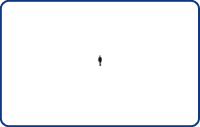Making CCTV Work For You
By CCTVCameraLondon Clark on December 19th, 2018
Request a Quote
Complete the form for a free no-obligation quote for CCTV installation
It is easy to end up with a CCTV installation which doesn’t meet your expectations because of a poor assessment of your requirements at the beginning. The first and most important question to be addressed with any CCTV system is What do I need to see? Closely followed by Why do I need to see it? CCTV Camera Europe uses these questions to determine the cameras and lenses required. The Home Office Home (document 55/06) has defined four general observation categories based on the relative size that a person appears on screen to provide guidance and simplify design specification. These classifications help the user to define his requirements so that our design fulfils them. The result is that appropriate cameras and lenses are in suitable positions to capture useful images. That is why our installations are successful. From largest to smallest the classifications are:
- Identify
- Recognise
- Detect
- Monitor
Most private installations are designed to identify and recognize people. These installations will use one or two specific positions, such as entrances, to get the identification, with the remaining cameras monitoring activity to so that unwanted activity can be cross-referenced to the identification. Public applications typically monitor, control, and detect.

Identify
Subject fills about 120% of the frame. With the figure now occupying that amount of the screen height, picture quality and detail is sufficient to enable the identity of an individual to be established beyond reasonable doubt in a British Court of law. A typical camera position would be entrances so that individuals inside a building can be identified.

Recognise
The subject fills about 50% of the frame. When a figure occupies at least 50% of screen height viewers can cross reference these images to identification images with a high degree of certainty. The combination of larger and smaller images enables unwanted activity to be captured and referenced back to an individual economically.

Monitor
Subject fills about 10% of the frame and mainly used in motion detection systems. From this level of detail an observer should be able to monitor the number, direction and speed of movement of people, providing he knows they are there. People cannot be identified or recognized to a reliable degree of certainty.

Detect
A figure occupies at least 5% of the screen height and the scene portrayed is not unduly cluttered. The picture gives a high level view of what is happening only. A typical use would be to monitor traffic. Obviously people cannot be identified or recognised.
Most sites require a mix of these classifications. So camera, lens and location have to be matched. Outdoor cameras may have to be vandal or intruder proof. Design requirements have to be thought through. This way when an event occurs the system performs to design specification, providing the end user with the results and value required. CCTV Cameras London carries out a site / situation survey and will demonstrate a range of indoor and outdoor cameras and lenses to meet your requirements. Call CCTV Cameras London today to discuss your requirements on 07926 530 301
